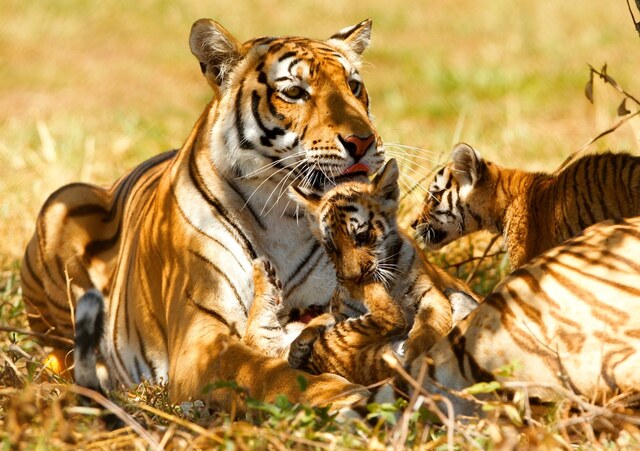Tigers are one of the most majestic and powerful predators on the planet. Known for their strength and solitary nature, tigers exhibit fascinating behavior when it comes to raising their young. But there's a question that often comes up: Will tigers eat their own cubs? This question sparks curiosity due to the complexities of animal behavior and survival instincts. In this article, we’ll dive into the reasons behind tiger behavior, including cub cannibalism, and what it means for their survival in the wild.

When we think of tigers, we often imagine them as fierce hunters and dominant creatures of the wild. However, tigers are also known to be protective and caring mothers. A female tiger will typically give birth to a litter of cubs and care for them alone, as tigers are solitary animals. But under certain circumstances, a tiger mother might be driven to eat her own cubs. This behavior is rare but not unheard of.
So, why would a tiger mother eat her own young?
Tigers eating their own cubs is not a typical behavior, but it can happen under specific circumstances. Several factors can drive this response:
Lack of Resources: In times of scarcity, a tiger may not have enough food to survive herself, let alone feed her cubs. This survival instinct can lead a mother to consume her cubs to ensure her own survival.
Stress and Environmental Factors: Tigers under significant stress, perhaps from threats to their territory or human disturbances, might resort to infanticide or cannibalism as a way to reduce competition or in response to their overwhelming stress.
Health of the Cubs: If the cubs are weak or sickly, a tiger mother may abandon or even eat them to preserve her own energy. Nature’s harsh realities often dictate that only the healthiest survive.
Male Tigers and Infanticide: Interestingly, male tigers are sometimes known to kill the cubs of a female tiger if they are not their own. This is a strategy to bring the female back into estrus (heat) so that he can mate with her and pass on his own genes. In rare cases, this can lead to cub cannibalism by the female tiger as she might eat the cubs to prevent them from becoming competition for her future offspring.
In zoos or tiger sanctuaries, tigers are typically well-fed and don't face the same pressures as their wild counterparts. However, tiger mothers in captivity sometimes still engage in cub cannibalism, especially if they are first-time mothers or stressed by captivity conditions. In many cases, zookeepers will intervene to prevent this behavior and ensure the survival of the cubs.
While tiger cannibalism is not commonly observed in the wild, it does occur occasionally. Most tiger mothers raise their cubs in relative safety, teaching them how to hunt and survive. However, nature can be brutal, and when food is scarce or a tiger feels threatened, desperate measures may be taken.
While tigers are generally protective and caring mothers, it is not impossible for them to eat their own cubs under certain extreme circumstances. Factors such as food scarcity, stress, and the health of the cubs play a crucial role in determining whether this behavior will occur. The question of whether tigers will eat their own cubs is complex, but it highlights the harsh realities of survival in the wild.
Schaller, G. B. (1967). The Deer and the Tiger. University of Chicago Press.
Karanth, K. U., & Sunquist, M. E. (1995). Prey selection by tiger, lion, leopard and wolf in tropical and temperate zones. Journal of Animal Ecology.
Packer, C., & Pusey, A. E. (1997). The ecology of sociality in felids. Scientific American.
animal tags: Felidae
We created this article in conjunction with AI technology, then made sure it was fact-checked and edited by a Animals Top editor.